Psychedelic Compounds are Focus of USciences Lab

Editor's note: This article was written prior to University of the Sciences' merger with and into Saint Joseph's University and does not reflect the current, combined institution. References to programs, offices, colleges, employees, etc., may be historical information.
For Jason Wallach, PhD, assistant professor of pharmaceutical sciences at USciences’ Philadelphia College of Pharmacy, his desire to learn about psychedelic substances began long before his research career.
“I recall reading feverishly about [psychoactive compounds] after checking out books from the school library as a child,” Dr. Wallach shares. “I have always been intrigued that a small amount of chemicals could induce powerful and strange experiences, even though they are socially taboo.”
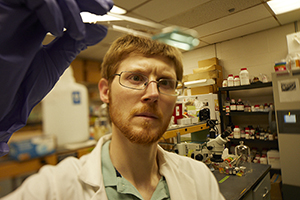
Combined with an interest in consciousness and the treatment of psychiatric diseases and disorders, he pursued in his undergraduate studies by earning a bachelor’s degree in cell and molecular biology from Indiana University of Pennsylvania. Dr. Wallach attended USciences to complete his PhD in pharmacology and toxicology.
Despite being told to seek out other research that may be more easily funded by government and private sources, Dr. Wallach has found that his persistence led to success.
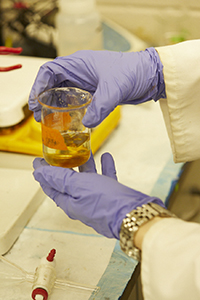 Today he leads a lab at USciences focused on finding the next compounds that may have breakthrough potential to innovate treatment of mood disorders, post-traumatic stress disorder, substance use disorders, anxiety disorders, and more.
Today he leads a lab at USciences focused on finding the next compounds that may have breakthrough potential to innovate treatment of mood disorders, post-traumatic stress disorder, substance use disorders, anxiety disorders, and more.
In 2020, Dr. Wallach’s persistence paid off. He was awarded a contract with mental healthcare company COMPASS Pathways, to establish a Drug Discovery Center in his lab. The Center is a collective of leading scientists interested in developing new and innovative psychedelic therapeutics. More specifically, the focus of the Center is on the discovery and development of innovative life-changing therapeutics for neuropsychiatric indications.
Budding Potential
The Center in Dr. Wallach’s lab is made up of three passionate chemists: Michael Dybek, Hamilton Morris, and Jitka Nykodemova. A graduate student, Philip White, also joined the team in fall 2021 and the center is looking to bring on another post-doctoral pharmacologist soon.
The Discovery Center has also expanded to include labs from UC San Diego and the Medical College of Wisconsin.
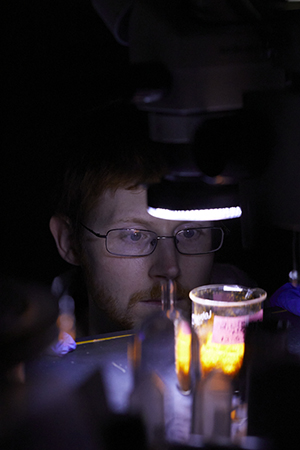
“We are tremendously excited about the work Jason and his team are doing at the Discovery Center, in collaboration with some of the world’s best scientists in psychedelic research,” said Dr. Gary Gilmour, Vice President of Preclinical Research, COMPASS Pathways. “This has the potential to deliver a portfolio of new compounds and therapies for patients who are suffering with serious mental health challenges, and moves us closer to our vision of a world of mental wellbeing.”
“If this broad potential is demonstrated with controlled clinical trials, it will be amazing and revolutionary,” said Dr. Wallach. “Not only would this dramatically improve the quality of life for millions immediately, it has the potential to reshape how we understand and treat psychiatric disorders in the future.”
Psychedelics can induce profoundly positive changes in outlook, mood, and thought patterns by broadly improving core symptomatology. Such a perspective change is drastically needed, Dr. Wallach says, as the current nosology around psychiatric disorders is in many cases limited. Psychedelics could help realize a new nosology, allowing more efficacious psychiatric care.
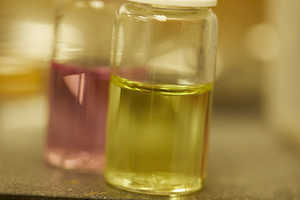
Central Nervous System (CNS) drug discovery has largely stalled, leading to many abandoning drug development in this area completely. This has left a vacuum in the pipeline and an unacceptable absence of efficacious interventions for patients in many psychiatric indications, Dr. Wallach said.
“I am confident that psychedelics can create radical shifts in perspective and outlook, which will have profound implications for psychiatric care,” he said. “Everyone is touched by mental health issues, either personally or through their loved ones. We want to use our expertise and finite time on this planet to help address these issues.”
An Art and a Science
Dr. Wallach is influenced by the works of those who diligently continued their research in psychedelics when others were not. From Dr. Alexander Shulgin, Albert Hoffmann, and David Nichols, his interest grew.
Plants and fungi producing psychedelic effects have been used in the medical traditions of indigenous populations for millions of years. Modern research is typically traced back to
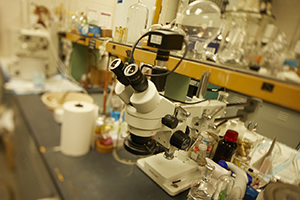
Hofmann, who first synthesized lysergic acid diethylamide (LSD-25) in 1938. However even earlier research occurred with mescaline, the active alkaloid in the peyote cactus. Both the scientific and cultural exploration of the drug exploded in the 1950s and 60s, and then government interventions restricted psychedelic research in the 1970s and 80s.
“Reading the work of Dr. Shulgin, specifically PiHKAL and TiHKAL, was the final push I needed to focus efforts around psychedelics,” said Dr. Wallach. “Dr. Shulgin’s deep-seated love for science and discovering the secrets of nature is infectious. Through his work, I began to see drug design as an art, as much as it is a science.”
Because of the persistence of researchers and advocates, clinical trials using psychedelic compounds for the treatment of mental health and therapeutic purposes have emerged more recently. In 2019, esketamine, a dissociative anesthetic with psychedelic properties, was approved for use by the Food and Drug Administration as a treatment for depression.
Finding A Breakthrough
The Drug Discovery Center is focusing efforts on a combination of modifying existing compounds and pursuing new psychedelic scaffolds.
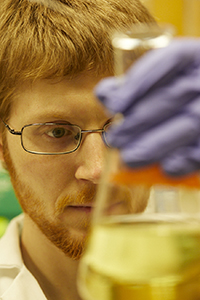
“There is room for improvement with existing compounds, many of which were not developed with clinical use in mind,” said Dr. Wallach. “At the same time, identifying novel scaffolds can provide unique opportunities, so it is important to pursue both approaches.”
The biggest challenge for the center is in translating the preclinical work to clinical outcomes. Despite this challenge, he is optimistic.
“We have clinical trials, historical usage, and a wealth of anecdotal evidence to support their efficacy in many areas,” he said. “This is a benefit as it allows us to focus immediate efforts on addressing issues like maximizing this efficacy, enhancing tolerability, and improving access.”
